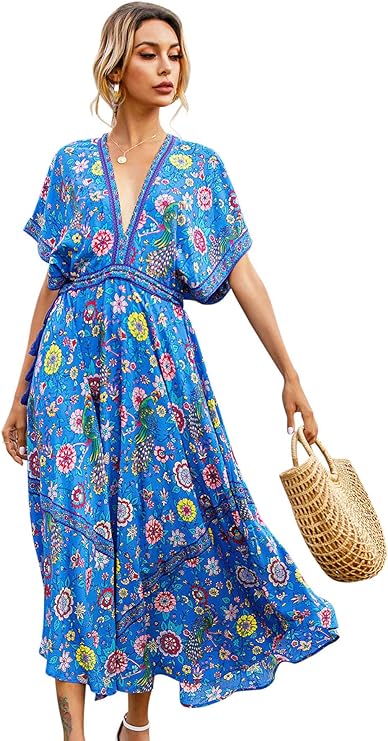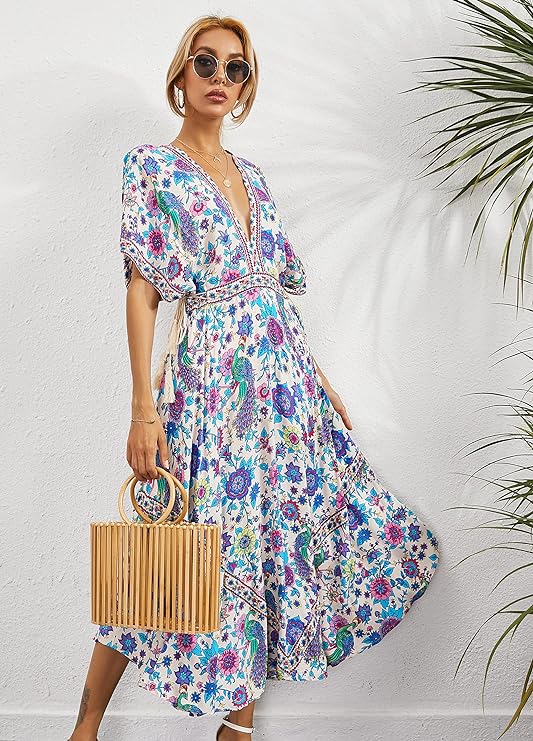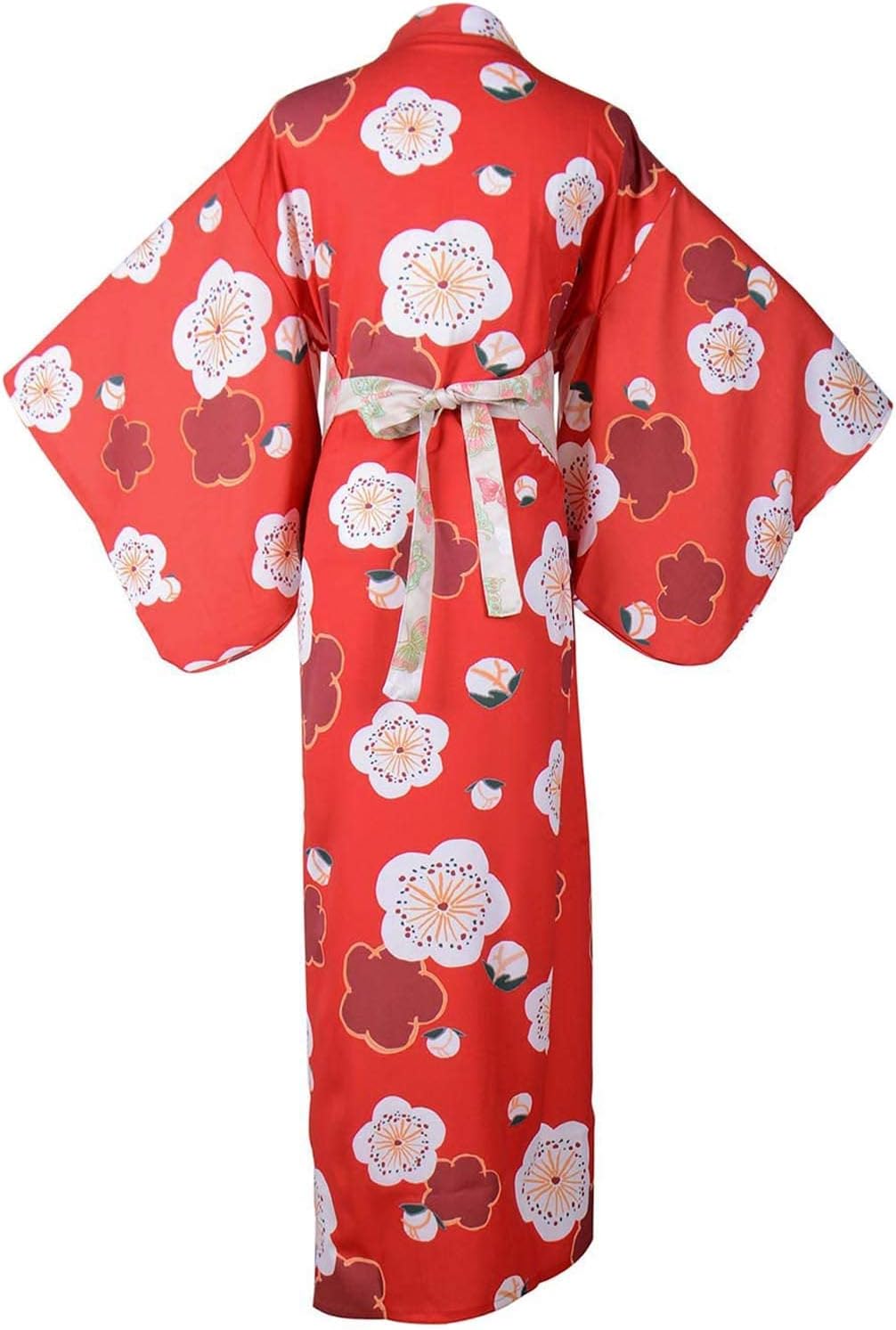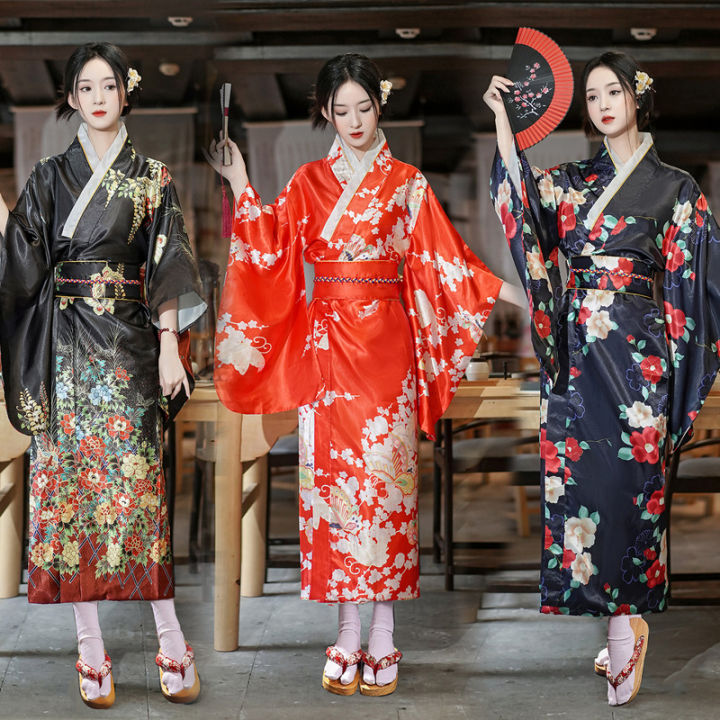The kimono dress, with its long history and beautiful, traditional Japanese aesthetics, has captivated fashion enthusiasts around the world. Its seamless blend of elegance and historical significance offers a unique fashion statement that transcends cultural boundaries. In this exploration, we delve into the evolution of the kimono dress, its integration into modern fashion, and how it symbolizes a bridge between the past and present. Through understanding its roots and contemporary iterations, we can appreciate the robe kimono not only as an artifact of cultural heritage but also as a versatile element in today’s fashion landscape.

Traditional Elegance: The Historical Significance
The Origins and Evolution
The kimono, traditionally known as a formal and everyday garment in Japan, has undergone significant transformations over centuries. Its origins trace back to the Heian period (794-1185), where it started as a simple garment for the Japanese aristocracy. Over time, the kimono evolved in design, fabric, and decoration, reflecting societal changes and technological advancements in textile production. By the Edo period (1603-1868), the kimono had become a symbol of status, identity, and fashion among Japanese people, adorned with elaborate patterns and made from luxurious fabrics for the upper class, while simpler versions were worn by the common folk.
The Artistry and Craftsmanship
Kimono-making is an art that requires meticulous attention to detail and years of skilled craftsmanship. Every aspect, from the selection of fabric to the dyeing process and the placement of designs, is carefully considered to create a piece that embodies beauty and cultural pride. Traditional techniques such as Yuzen dyeing and Shibori tie-dyeing highlight the artisan’s skill in creating intricate patterns and vibrant colors that tell a story or symbolize nature and seasons. The kimono dress’s aesthetic appeal lies not just in its visual beauty but also in the technical artistry that goes into its creation.

Cultural and Symbolic Meanings
The kimono dress is deeply ingrained in Japanese culture, holding various symbolic meanings and serving different social functions. It is often associated with significant life events, such as weddings, Coming of Age Day, and tea ceremonies, each requiring specific types of kimonos. The choice of color, pattern, and style can convey the wearer’s age, marital status, and even season, making the kimono a living canvas that reflects individual and cultural identity. This rich symbolism and connection to tradition make the kimono dress a remarkable testament to Japan’s cultural heritage.
Modern Adaptations: The Kimono Dress Today
Fusion with Contemporary Fashion
In the contemporary fashion scene, the kimono dress has been reimagined and adapted by designers worldwide, merging traditional elements with modern sensibilities. This fusion has resulted in a variety of styles suitable for everyday wear, special occasions, and even haute couture runways. Designers have experimented with fabrics, cuts, and patterns to create pieces that honor the kimono’s heritage while appealing to modern tastes. From sleek, minimalist designs that emphasize clean lines and simplicity to bold, avant-garde pieces that challenge conventional notions of shape and form, the modern kimono dress showcases the versatility and timelessness of its traditional counterpart.

The Global Appeal and Cultural Sensitivities
The international popularity of the kimono dress speaks to its universal appeal and the growing interest in cultural exchange through fashion. However, it has also prompted discussions about cultural appropriation. In the global fashion industry, it’s crucial to approach the kimono dress with respect and sensitivity, acknowledging its cultural significance and origins. By fostering a deeper understanding and appreciation of the kimono’s history and craftsmanship, designers and wearers can celebrate its beauty without erasing or commodifying its cultural value.
Sustainability and Innovation in Kimono Design
Sustainability has become a significant focus in the fashion industry, and the kimono dress is no exception. Modern interpretations of the kimono often incorporate eco-friendly materials and sustainable production methods, reflecting a commitment to environmental responsibility. Additionally, technological advancements have opened new possibilities for customizing and personalizing kimono dresses, making them more accessible and adaptable to individual preferences. These innovations not only ensure the relevance of the kimono dress in today’s fashion landscape but also contribute to the preservation and evolution of this iconic garment.

A Timeless Cultural Icon in Fashion
The women dress, with its deep historical roots and contemporary reinventions, continues to enchant and inspire. Its journey from traditional Japanese garment to a global fashion icon exemplifies the dynamic interplay between tradition and innovation, identity and diversity, artistry and sustainability. By embracing the heritage and potential of the kimono dress, the fashion world can celebrate cultural exchange and create meaningful connections that transcend time and borders. As we look to the future, the kimono dress stands as a testament to the enduring beauty and relevance of cultural traditions in our ever-evolving world.
Cultural Preservation and Modern-Day Challenges
Striking a Balance Between Tradition and Innovation
In striking a balance between cultural preservation and contemporary relevance, the kimono dress today faces unique challenges. On one hand, designers strive to maintain the dress’s traditional elements—like its T-shaped silhouette and symbolic motifs. On the other hand, innovation is essential to keeping the kimono dress appealing to modern audiences. This includes experimenting with new materials, cutting-edge designs, and adopting sustainable practices. The challenge lies in respecting the origins of the kimono while evolving its design to reflect current trends and values.
Cultural Appropriation in Fashion
One of the most contentious issues the kimono dress faces is cultural appropriation. The line between appreciating and appropriating cultural symbols can be thin, and with the kimono’s surge in popularity globally, it is essential to navigate this space with sensitivity and respect. Designers must take extra care to honor the cultural heritage of the kimono, ensuring that their creations acknowledge its history and significance. When non-Japanese brands and designers adopt the kimono dress, it is crucial to do so in a manner that celebrates Japanese culture without exploiting or misrepresenting it.

The Kimono Dress in the Modern Wardrobe
Adapting to the Western Fashion Scene
The inclusion of the kimono dress in Western fashion has seen its silhouette, fabric, and design tailored to a different audience. Adaptations often include streamlined versions that are more akin to wraps or tunics than the traditional, full-length garment. These Westernized kimonos sometimes blur the lines between a traditional kimono and a fashionably loose outer garment. This approach has made the kimono more wearable for a Western audience, introducing the beauty of Japanese design to a wider demographic.
Fusion Fashion and Beyond
Fusion fashion has played a significant role in integrating the kimono dress into everyday modern attire. Designers have been fusing the aesthetics of the kimono with different cultural styles to create innovative and eye-catching apparel. The fusion extends to fabric choice, with some kimonos made from non-traditional materials like denim or digitally printed textiles. This cross-cultural experimentation has opened the kimono up to an endless array of styling possibilities, making it a globally celebrated piece of fashion.
In the world that constantly demands both cultural reverence and innovative design, the kimono dress stands as a testament to the possible harmony between the two. The modern kimono dress—with its roots firmly planted in Japan’s rich history and its branches stretching out to embrace contemporary styles and sensibilities—offers a perfect blend of the old and the new. It’s not just a piece of clothing; it’s a symbol of the enduring beauty of tradition, the excitement of modern fashion, and the potential for a global conversation through the language of style.
